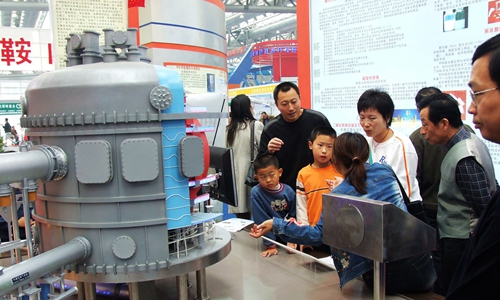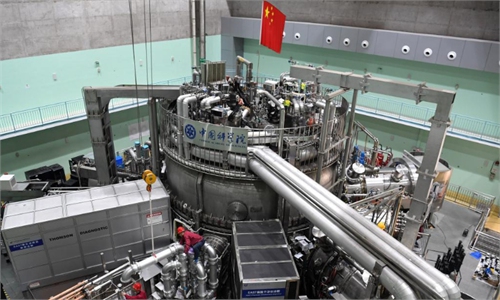Shanghai firm plans to build ‘world’s first’ fully high-temperature superconducting tokamak using AI

Public visit the model of artificial sun in Hefei, capital of East China’s Anhui Province in October 2006. Through the model, they can know how the machine generates electricity. Photo: VCG
A Chinese company vows to build the world’s first all-high-temperature superconducting tokamak using artificial intelligence technology by the end of this year, as more stakeholders are looking ahead to the development of the nuclear fusion energy, which is believed to be the future ideal "ultimate energy" for humankind.
According to a report from thepaper.cn, Guo Houyang, co-founder and CTO of Shanghai-based startup Energy Singularity, said at a forum held in Shanghai that at the end of this year, the company will combine high-temperature superconducting advanced tokamak and artificial intelligence technology to build the world’s first all-high-temperature superconducting tokamak, while explore compact high-confinement advanced tokamak operation modes.
Moreover, by 2027, the company plans to design and build a steady-state, high-magnetic-field, high-temperature superconducting advanced tokamak to comprehensively verify and lay the scientific and technological foundation for efficient fusion energy acquisition. By 2030, a demonstration power plant will be built, said Guo.
Prior to the firm, Chinese electric vehicle maker Nio also invested in a startup that is developing fusion technologies, according to a Reuter report. The newly established company, Neo Fusion, will research and develop technologies that aim to bring controlled fusion for commercial use globally in about two decades, the source said.
However, industry observers have pointed out that nuclear fusion is still confined to the laboratory at the moment and primarily funded by governments, since it requires significant investments, and the technology may need decades before it can hit the market.
Guo stated that controlled nuclear fusion is one of the important ways to solve energy and environmental problems. According to the World Energy Outlook, if fossil fuel like oil, natural gas and coal, gradually exit the global market, humans will face more than 10 percent energy shortage by 2050. This is a huge opportunity and challenge for the development of controlled nuclear fusion energy.
The problem facing tokamak is that their device size is very large and complex, and the construction and operation costs are high. Over recent years, breakthroughs in high-temperature superconducting materials and other technologies have made it possible to develop economically viable tokamak, according to Guo.
The tokamak is an experimental machine designed to harness the energy of fusion.
Global Times

